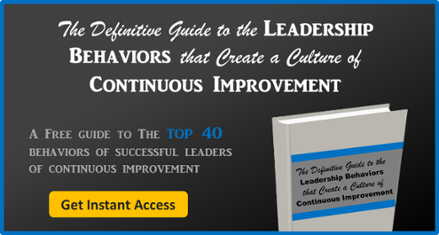 Check out that guy in the picture on the right. His employees are tossing some bright ideas into the funnel, and they’re raining down on him while he cowers under an umbrella. The ideas pile up around him, and their brightness fades.
Check out that guy in the picture on the right. His employees are tossing some bright ideas into the funnel, and they’re raining down on him while he cowers under an umbrella. The ideas pile up around him, and their brightness fades.
Does this guy look familiar?
This depicts a very common problem for organizations in every industry. Leaders start out with the best intentions, asking their employees for ideas in an attempt to establish a culture of continuous improvement. The ideas start trickling in, and with any luck, that trickle turns into a deluge, which is awesome! Unless you’re the guy holding the umbrella.
The critical failure of many leaders is that they think that they have to be the ones implementing all of those great opportunities for improvement. They trust their staff to come up with the ideas, but it never occurs to them to let their staff also come up with the solutions to the problems and implement changes too!
Smart leaders understand that can’t (and shouldn’t) take on the burden of implementing every idea that comes through the funnel. Instead, they harness the collective power of their staff to maximize the improvement potential of the organization.
Make sure you’re not the reason your culture of continuous improvement fails:
-
Know when to step in, and when to step back
Leading a culture of continuous improvement is an art. It requires balanced. You need to be able to know when people need your help versus when they can do it on their own (or just need a little help from you). Don’t invest your own time getting involved when your employees are capable of handling the improvement work on their own - instead, appreciate how capable they are, and stay hands-off. Keep an eye out for when the team is veering off course or needs a little extra guidance, but don’t smother them. Delegate and give people responsibility, but make sure it’s clear that you’re there when needed. -
Quickly respond to every idea
In order for you to succeed in getting your employees to do the heavy lifting for you, you need them to buy in to the idea of daily continuous improvement. To do that, make sure that you acknowledge all of the ideas they put in the funnel right away. Whether you’re praising the idea and giving the “OK” to proceed to work on it or asking constructive questions about it, this will show the employees that you value their contribution and prompt them to get more involved as they implement their ideas. -
Create time for improvement
It seems almost too obvious to say, but make sure your employees know that it’s alright to find time or make time to improve the way work is done. This usually needs to be explicitly stated - but once you do, you and your employees will start to see how investing time in improvement saves more time in the long run. -
Encourage employees to think - don’t just give answers
Think about why you hired your employees. I bet the fact that they’re smart, motivated, creative, analytical problem solvers has something to do with it (and if not, you might want to rethink your hiring strategy). Encourage them to use their brain power! When they come to you with problems, coach them to think of answers on their own. Ask them to go research things. Encourage them to talk with others. It’ll lighten your load a little, and your employees will be more invested in their continuous improvement work. -
Emphasize trying small(est) tests of change
I wouldn’t suggest you get your employees implementing ideas willy nilly, without including this last tip. If they’re going to be running around improving everything, make sure you emphasize the importance of testing each change in the smallest way possible to start. For example, if they want a power cord organizer in every conference room in the office, suggest they try it out in one room first. Small tests minimize risk, as you’d end up only with small failures, and small victories can then be extended to be big victories.
As you can see, there are lots of ways to avoid being smothered under a pile of great employee ideas. Ultimately, the trick is to make sure you’re empowering your employees to enact positive change under your guidance, rather than under your instruction. Remember - you want to be a coach, not a director.



Add a Comment